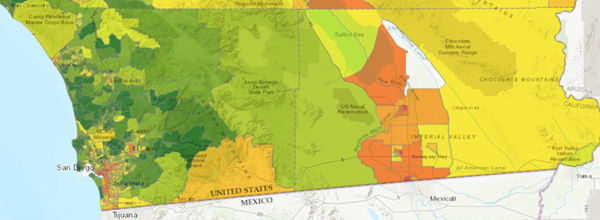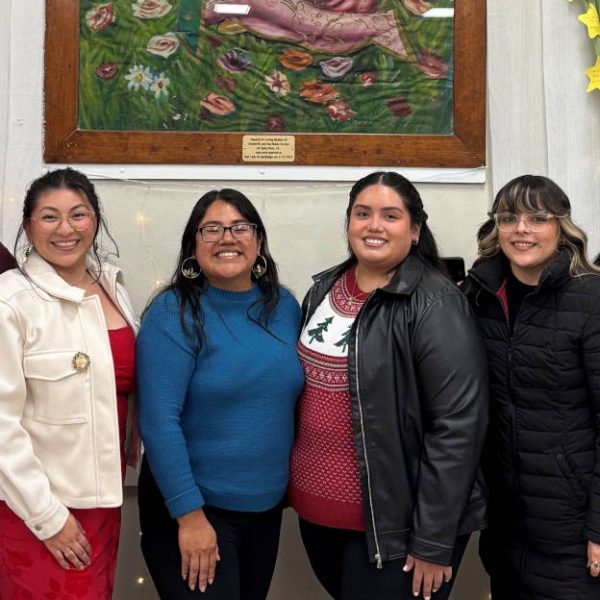SAN DIEGO — Father Mike Sinor, 73, recently retired from active ministry.
For about eight years, he served as coordinator of spiritual direction at St. Francis Center, where diocesan seminarians begin their formation for the priesthood.
Born in Oakland, California, Father Sinor moved to San Diego with his family in the mid-1960s. A graduate of University of San Diego High School, whose legacy continues today at Cathedral Catholic High School, he was ordained to the priesthood on July 30, 1988.
He has served as pastor of several parishes, including Immaculate Heart, Ramona; St. Rose of Lima, Chula Vista; St. Mary, El Centro; and St. Didacus and Immaculate Conception, both in San Diego.
Question: What was your path to the priesthood like?
Answer: I entered the seminary for the first time in 1970. After about a year, I told my spiritual director, Father Frank Fawcett, that I was going to leave. He said, “When you came in, I wasn’t sure you had a vocation, but I don’t think you should leave.”
I did what I thought I wanted to do. I dated a gal for a long time; we broke up. I did a lot of different kinds of jobs. I got a master’s in Theater Arts at the University of California, Irvine.
When I was 28, I sold my car for $600, got on a plane and moved to New York to pursue an acting career.
One day, I called Father Fawcett and asked if he would see me while I was in San Diego for the Thanksgiving weekend.
I admitted to him, “I don’t know my head from my rear end. I don’t know what I’m doing with my life.” He asked if I had thought about being a priest, but I didn’t think I could be sold on that idea. At the back of my mind, I was thinking that celibacy was a hard thing.
But Father Fawcett gave me a prayer to take home. It was written by St. Charles de Foucauld, who had served in the French Foreign Legion and later lived as a hermit in the Sahara Desert.
What role did that prayer play in your discernment?
I prayed it every day and, then, all of a sudden, during the week of Epiphany, I knew that the priesthood was exactly what I wanted to do. I didn’t have any doubts.
I went back into the seminary, about 12 years after I had left. I was in a different situation than many of the other guys there, who were just discerning whether or not they were called to priesthood. In my case, I knew I was in the right place. I didn’t look backwards anymore.
What have you found most fulfilling about the priestly vocation?
I’ve met so many different kinds of people, done so many different kinds of ministries, and worked in a lot of different parishes. I really enjoy being with the people and seeing Christ in them. I see so much faith in the people of God in all kinds of different situations, including when people are dying. And even on the cusp of death, they can be very full of joy.
What were the responsibilities of your most recent assignment at the seminary?
One was providing spiritual direction for the guys who were doing their graduate-level theology and were getting close to ordination.
During a previous stint on the St. Francis Seminary staff, from 1990 to 1995, I also had served as a spiritual director.
During my more recent assignment at the seminary, I also worked with recently ordained priests. I would meet with them once a month during their first five years in ministry. There would be different topics that we’d reflect on, and part of it was about strengthening their connections with one another.
What I really liked about this work was seeing these guys after they’re ordained and just delighting in what God has done with them. It’s like I got a front-row seat.
How has St. Francis Seminary changed during your tenure?
The first time I was there, there wasn’t a school of theology attached to it. It was just a place where guys took their philosophy classes and fulfilled other prerequisites, before heading off to a major seminary outside the diocese, whether that meant Menlo Park, or Rome, or wherever.
Now, they study theology at the Franciscan School of Theology, which like St. Francis Center is located on the University of San Diego campus.
Are there benefits to keeping the seminarians in San Diego?
Absolutely, no question about it. It allows them to be immersed into the diocese and different local ministries. For example, I took some of the guys down to Casa del Migrante in Tijuana for five days last year.
Not only are our local seminarians able to make a final decision about priesthood, about giving themselves over to Christ, but they also get to know who the people are that they’re giving their lives to. That’s a very positive thing, and it’s not the usual thing either. There are so many places where guys don’t have the same pastoral experience in their own diocese. But we can do that because of the Franciscan School of Theology being here in San Diego.
What recommendations do you have for those who might be discerning their vocations?
They definitely should discern and be open to where God is calling them.
That’s what young men do when they’re dating a girl, but prior to making a life decision to marry her or not. Discerning the call to priesthood is similar. God is there in both decisions, right? With both vocations, to marriage and priesthood, you don’t know everything that’s going to happen, but there’s this radical trust in God’s love.
The diocese regularly holds Explorer Days, where single men are invited to spend a day at St. Francis Center and just get a taste of it and see what it’s like.
Any suggestions for those looking to deepen their faith and grow closer to God?
It doesn’t have to be for hours, and hours, and hours, but give some quality time to the Lord to be able to listen, not just with your mind, but with your heart also. Where is God calling you? How can you come closer together, whether it’s marriage or whether it’s priesthood? Open your heart and your mind up to the possibilities of the Spirit.









